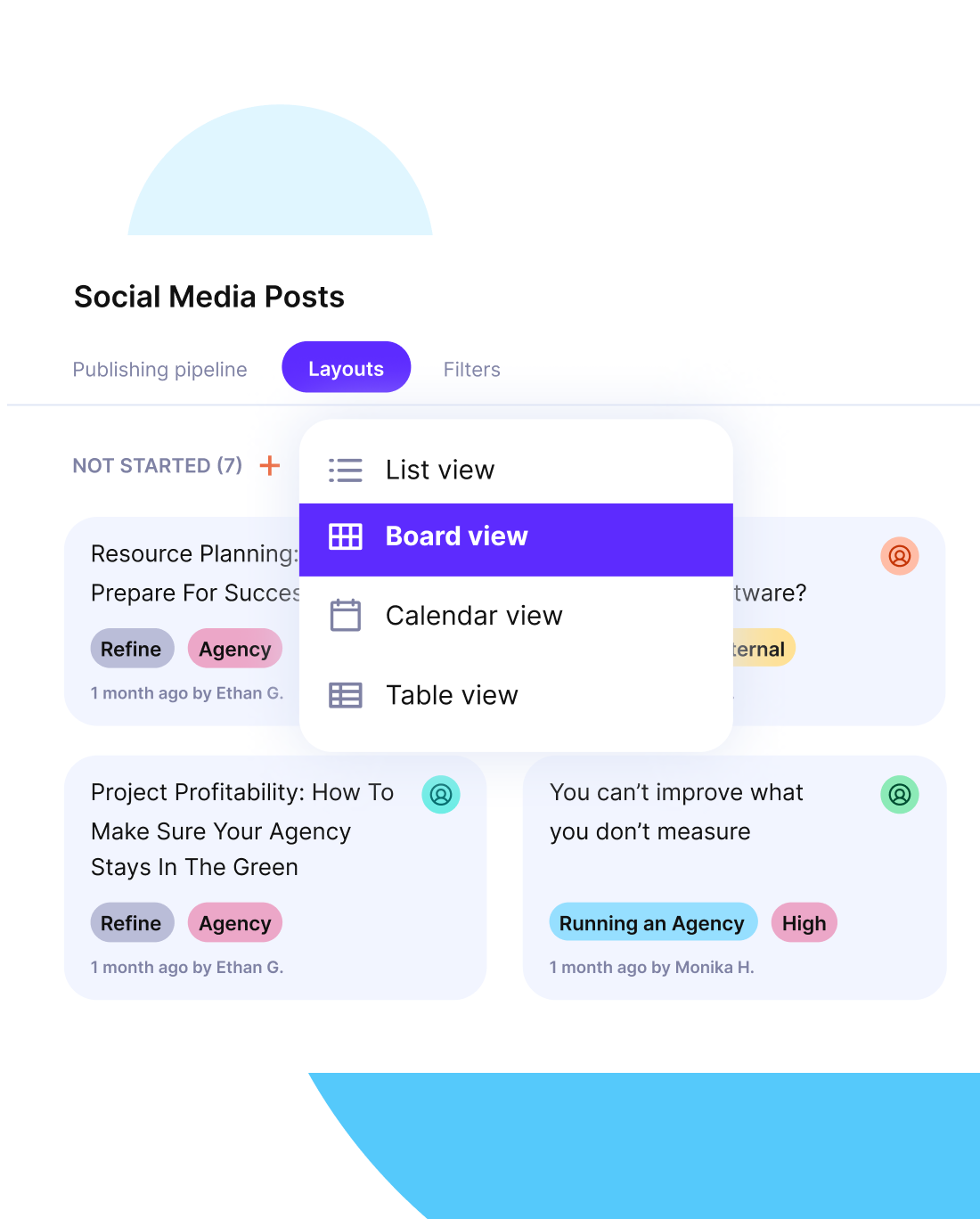What Is Project Knowledge Management (2026 Guide)
Sharing what your team learns shouldn’t be hard. Yet project-based firms often waste time retracing steps, repeating mistakes, or rebuilding knowledge from scratch.
This happens when there’s no simple system to capture and keep valuable knowledge.
This guide shows you how to build a lightweight project knowledge management setup inside your existing tools. It’s easy to maintain and helps your team avoid starting from scratch every time.
Key Takeaways
- Project knowledge management doesn’t need to be a large initiative. It works best when it’s simple, built into daily project management, and directly tied to where work happens.
- Service teams often struggle with repeated mistakes and lost context between projects. Lightweight KM practices boost knowledge sharing without adding overhead.
- Effective knowledge sharing comes from habits, not just project management tools. Capture just a few insights per project and make them easy to reuse.
- Knowledge sharing tools help service teams keep lessons, decisions, and context directly tied to the work itself, so nothing valuable gets buried in inboxes, discussion boards, or forgotten across systems.
What is Project Knowledge Management?
Project knowledge management is the process of using, creating, sharing, and storing knowledge to achieve project objectives more effectively.
According to the Project Management Institute’s PMBOK® Guide:
The process of using existing knowledge and creating new knowledge to achieve the project’s objectives and contribute to the organization’s learning.
Source: PMBOK Guide 6th Edition
Unlike enterprise-wide knowledge initiatives, project knowledge management in service environments is lightweight, practical, and embedded in daily work. It’s especially important for project-based organizations where teams change frequently and the temporary nature of work makes knowledge easy to lose.
For agencies and consultancies, building a usable knowledge management system means capturing insights in real time, not in theory, and keeping them accessible within the tools your team already uses.
We talk more about agency stuff in our agency processes guide.
What Are the Types of Project Knowledge?
The two main types of project knowledge are explicit knowledge and implicit knowledge. Explicit knowledge includes things like documents, templates, and task notes.
You can look at it as information you can easily write down and share.
Implicit knowledge (also known as Tacit knowledge) includes experience, judgment, and instincts gained from doing the work. Both are captured and transferred in different ways.
Here’s a quick comparison to help clarify how each one works:
| Type | Focus | Use Case | How It’s Transferred |
|---|---|---|---|
| Explicit Knowledge | Facts, processes, documentation | Sharing project deliverables or decisions | Written formats: docs, tasks, templates |
| Implicit/Tacit Knowledge | Experience, insight, context | Coaching, onboarding, mid-project decisions | Conversations, retros, shadowing |
Why Is Managing Project Knowledge a Challenge in Service Teams?
Managing project knowledge is a challenge for service teams because work is fast-paced, short-term, and constantly shifting. Projects kick off and wrap up quickly. Teams get reshuffled.
Without clear processes for capturing and storing what was learned, documentation falls through the backlog cracks. In project-based firms, the temporary nature of engagements makes it even harder to build lasting organizational knowledge.
In real life, these challenges usually look something like:
People leave and take context with them, or lessons get buried in Slack threads or are left behind in scattered docs in forgotten folders.
Without a system to retain what was learned during the execution of project timelines, teams redo work simply because no one remembers what was already done (and how).
Here’s a breakdown of common knowledge management issues, what causes them, and how to fix them:
| Issue | Root Cause | How to Fix It |
|---|---|---|
| Missed or forgotten client details | Scattered project documentation | Centralize notes and links inside the project itself |
| Team repeats avoidable mistakes | No process for capturing lessons learned | Add a retro step to every project and log 3 takeaways |
| Onboarding takes too long | No searchable record of prior work | Create templates with links to past deliverables and notes |
| Knowledge disappears with turnover | Employee turnover and siloed information | Document key decisions in the tool, not in someone’s inbox |
| Lost context between phases | No system to pass info through the lifecycle | Add handoff notes or shared checklists in your project management tool |
What Does Lightweight Knowledge Management Look Like?
Lightweight knowledge management looks nothing like traditional systems that require separate logins, formal taxonomies, or top-down governance. Instead, it’s embedded in how people already work.
That means teams tag notes where tasks live, store links in project descriptions, and capture retro insights directly in the tools they’re already using. In Productive, for example, teams attach lessons and decisions right to the tasks on the project timeline, so that they can move on with full visibility.
They also get real-time progress reports.
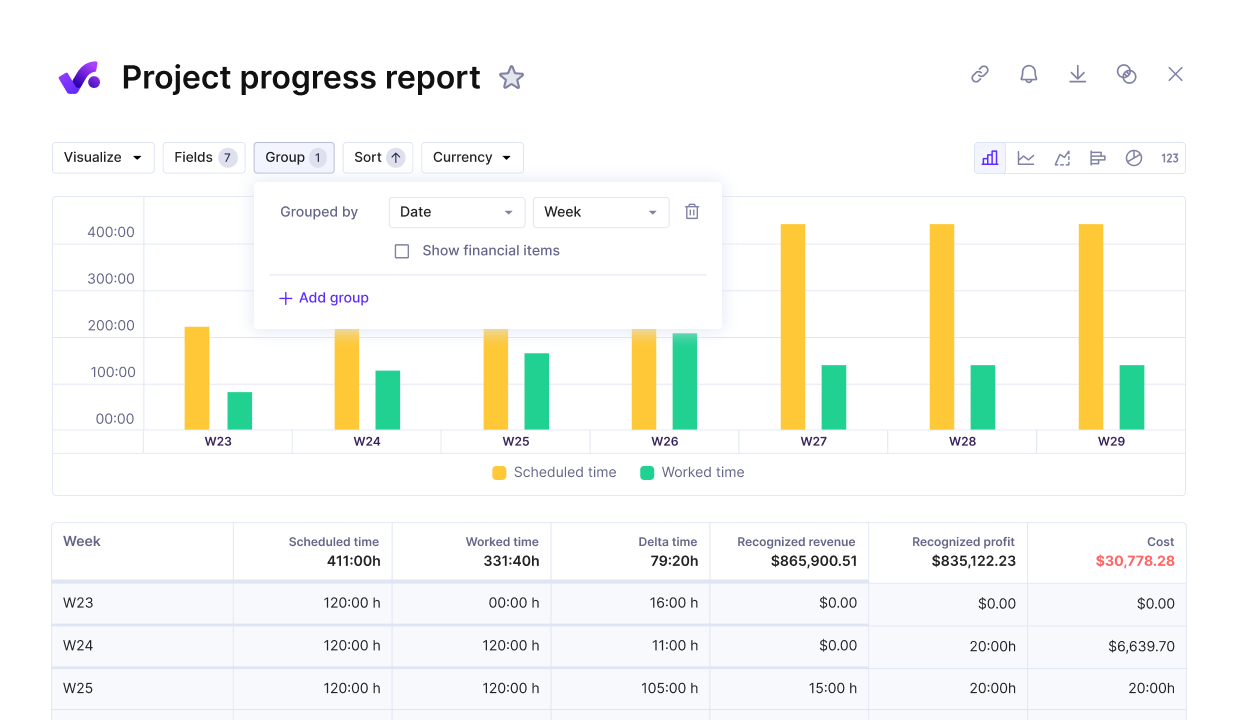
Get real-time insights on your project progress and add the lessons learned to your knowledge base.
A good lightweight system works because it’s usable in the moment, not something you update later out of obligation. Below, we talk about its two biggest benefits:
1. Capture Knowledge Where Work Happens
The best way to make knowledge management stick is to integrate it into the project management tools your team already uses. Instead of adding another place to update, make your existing project management system do double duty as a knowledge base.
That means writing key decisions into task descriptions, using notes fields to capture why something changed, and pinning useful links directly in the project. For example, instead of dumping feedback into a Google Doc, tag it on the task itself, where the work happens.
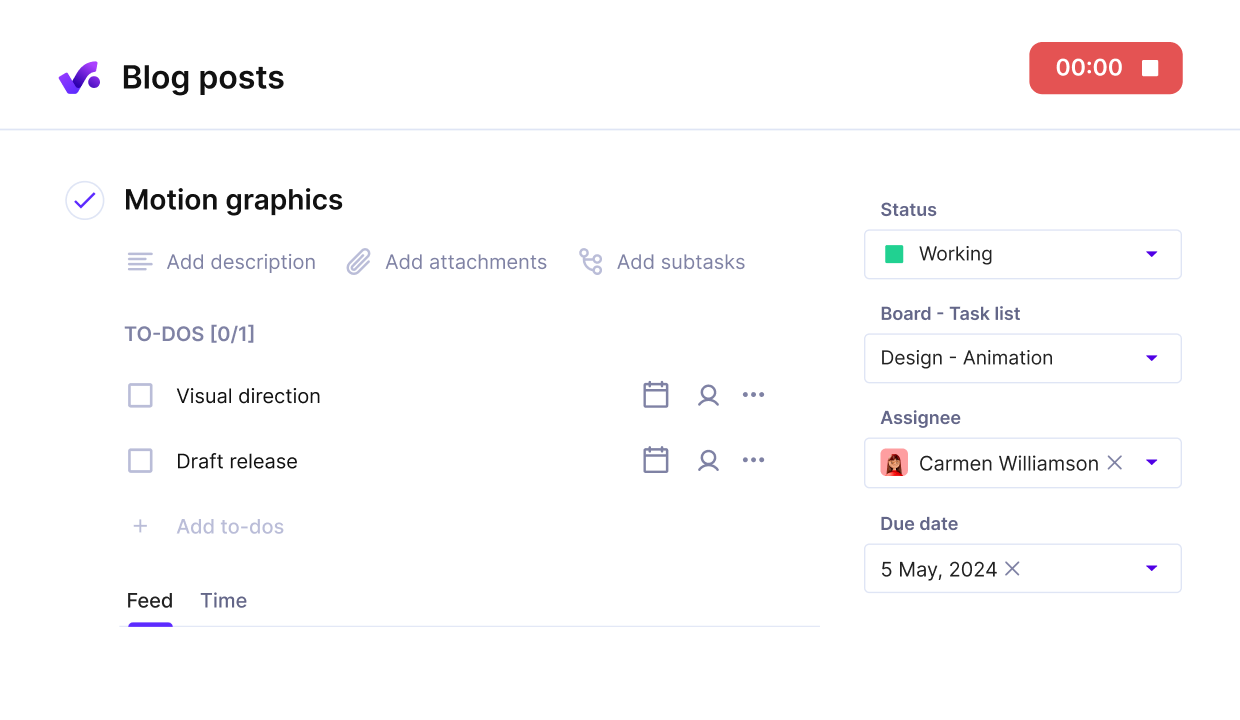
Create task templates with descriptions, clear to-do lists, and assigned owners.
When knowledge is part of your project documentation from the start, you don’t have to chase it down later. You just have to look where the work is happening.
2. Make Knowledge Easy to Reuse
To make project knowledge reusable, it also needs to be accessible. That means making it searchable, connected to real work, and easy to hand off.
Start by tagging your project documentation so people can find it by client, topic, or outcome. Link back to previous projects when similar scopes come up. Keep notes organized inside your internal wiki or project tool, not buried in email threads.
A lot of common tools have started integrating fancy AI features in their workflows. We cover our best picks in our top AI project management tools list.
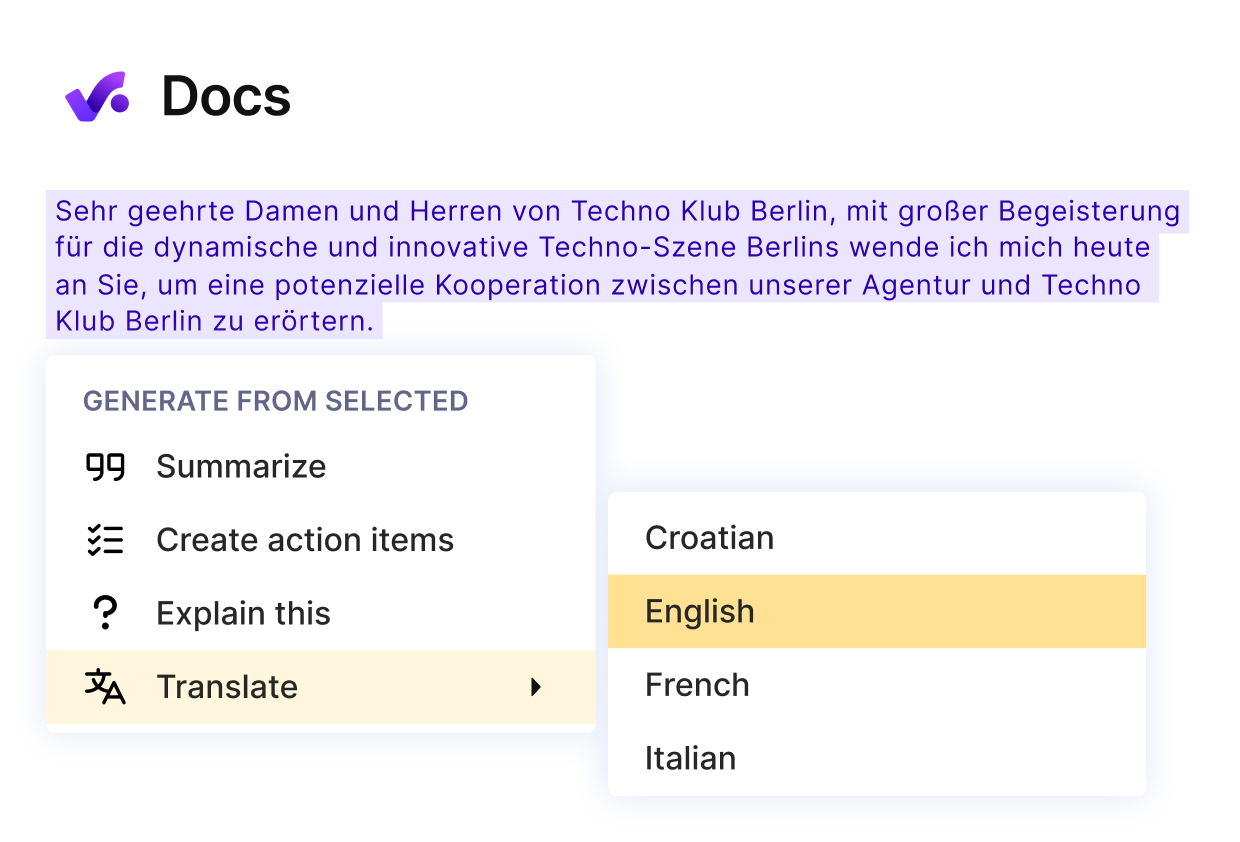
Use productive’s AI features to translate, summarize notes, find the data you need using natural language prompts, and much more.
Good onboarding is the ultimate test of a working knowledge system. If a new copywriter takes over a client tomorrow, would the person be able to find what they need to deliver without asking five people?
If the answer is no, it’s time to improve how you transfer individual and Tacit knowledge into shared, accessible formats.
Store and manage project knowledge with Productive
What Are the Best Practices for Knowledge Management in Service Teams?
The best practices for knowledge management in service teams include capturing insights in context, running short retros, tagging project knowledge, linking deliverables to outcomes, and avoiding hidden knowledge in personal channels.
These habits don’t require major process changes, just small knowledge-sharing routines that make knowledge easier to find and reuse. And yes, funny as it sounds, maintaining clear process knowledge frameworks is a competitive advantage.
Here are the best practices of sharing and preserving project knowledge.
- Capture in context. Use your KM tools to store insights directly in the project. This could mean adding notes to tasks or updating project fields mid-delivery.
- Keep retros short and structured. Make a habit of logging three quick takeaways at the end of each project. Focus on what surprised you, what worked, and what to do differently.
- Link deliverables to outcomes. Connect what was shipped to what it changed. This builds organizational learning and helps future teams understand the why behind the what.
- Tag and surface key knowledge. Use simple project management methods like labels or tags to make knowledge searchable, especially for onboarding.
- Avoid knowledge black holes. If something important lives in Slack, a discussion board, or someone’s inbox, it’s already gone. Move it into your shared system while it’s fresh.
How to Build a Simple KM System for Projects (Step-by-Step Process)?
The simplest way to build a knowledge management system is to decide what to capture, where to store it, and how to make it reusable.
Start by identifying what information is worth saving, such as lessons learned, client feedback, and unexpected decisions. Store this in places your team already uses: project notes, task fields, or linked documents inside your project tool.
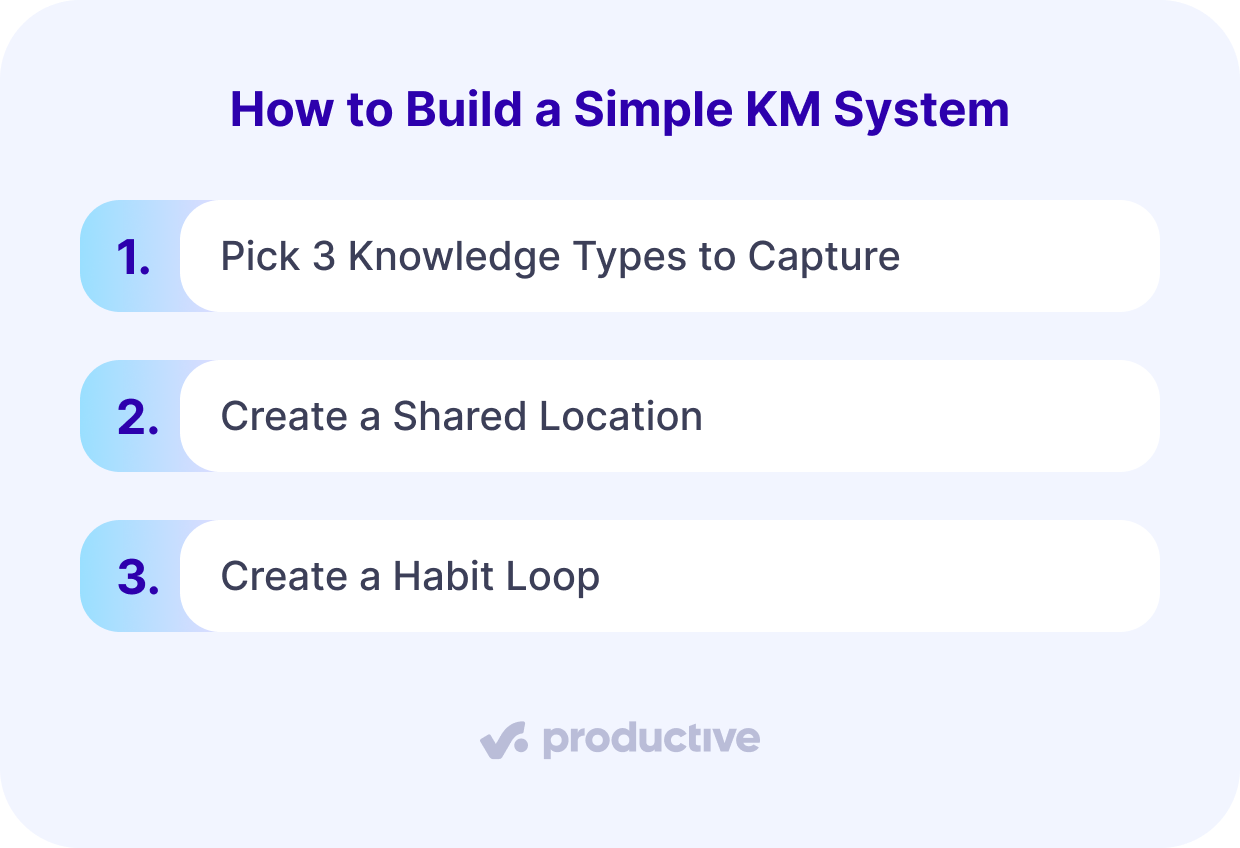
Instead of setting up a standalone wiki, use KM tools that fit into the delivery flow. Productive, for example, lets teams attach insights and documentation directly to each project or client. With fields, notes, and reusable templates, you can create a shared space for knowledge without reinventing your workflow.
In case your projects are bigger or a bit more complicated, here’s a detailed breakdown.
Step 1: Pick 3 Knowledge Types To Capture
To start small, pick three types of project knowledge that are easy to track and consistently valuable: feedback from retrospectives, links to final deliverables, and notes on unexpected client requests.
These categories give you just enough structure to build organizational knowledge without overwhelming your team. They’re easy to log during the project and even easier to revisit later when planning, onboarding, or scoping similar work.
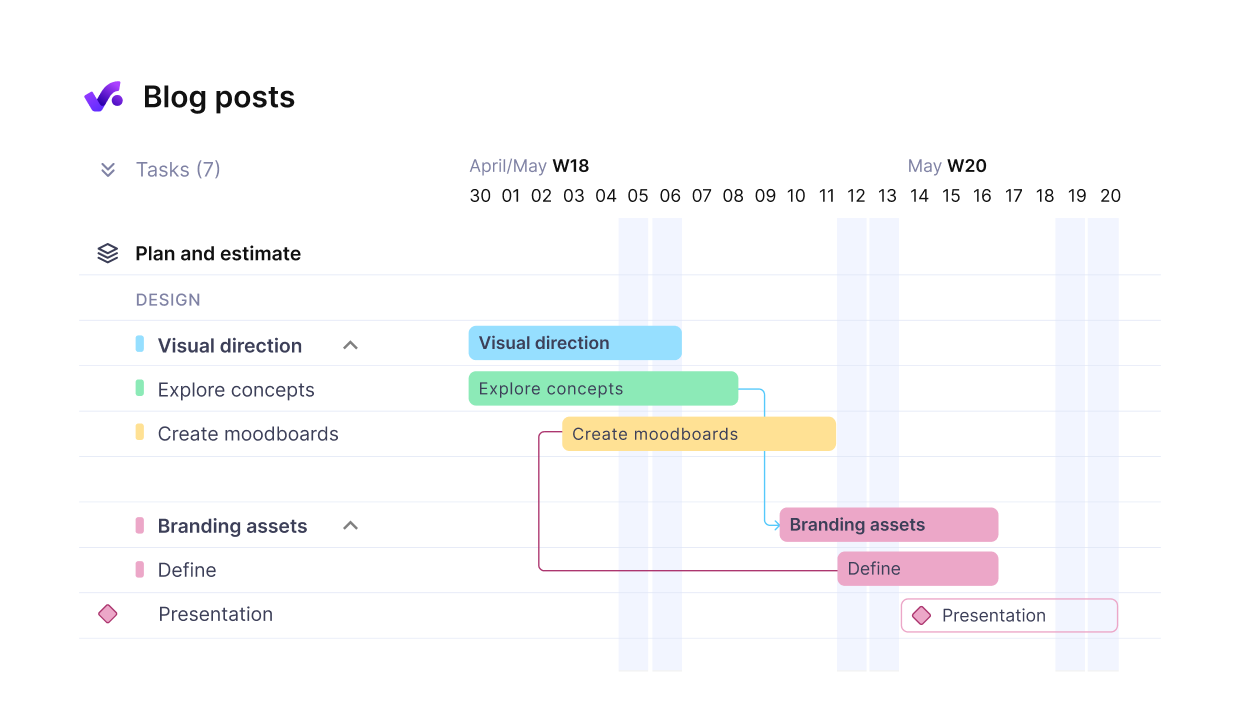
Use productive’s AI features to translate, summarize notes, find the data you need using natural language prompts, and much more.
Step 2: Create a Shared Location (Not a Separate Tool)
Avoid setting up a separate internal wiki or project management knowledge base that no one maintains. Tools like Notion can quickly turn into dusty graveyards when they sit outside the actual project work.
Instead, use your project management tool to house what matters. Fields, pinned notes, or linked docs inside the project space are easier to update and more likely to be used. This makes knowledge accessible in context, not hidden in another tab.
If your current project management tool doesn’t support this kind of setup, it might be time to evaluate what to switch to. Start with our overview of the best project management tools.
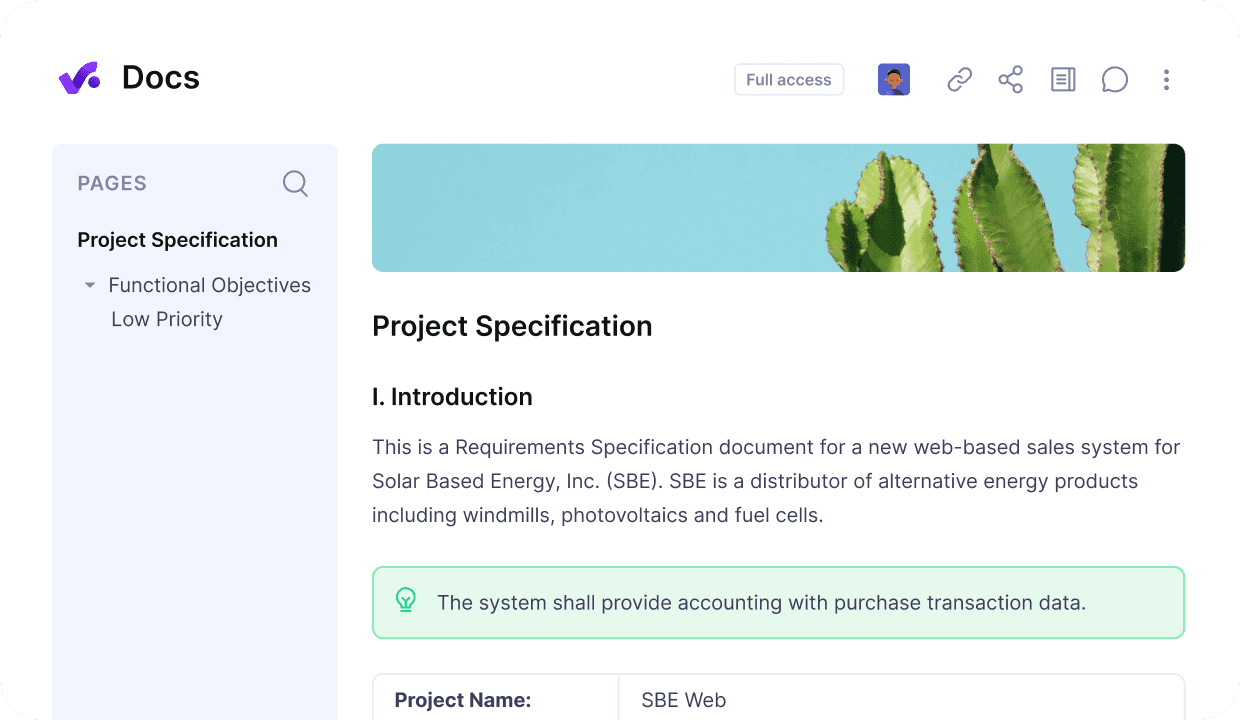
Instead of a separate document management system, use Productive’s Docs.
Step 3: Create a Habit Loop
Create a simple “transfer of knowledge” loop that helps your team learn from every project and apply that knowledge to the next one.
Run a quick retro at the end of each engagement, capture three meaningful takeaways, and log them directly in your project tool. The next time a similar project starts, pull those notes forward and apply them.
Keep it human. If no one reads what you saved, it doesn’t count. A good loop surfaces lessons learned at the right time so your service team actually benefits from what someone else in your company already figured out.
What Tools To Use for Project Knowledge Management?
The best tools for project knowledge management are all-in-one project management platforms. They keep knowledge tied directly to the work, inside projects, tasks, notes, and timelines, so teams can access it when and where they need it.
Unlike separate wikis or document management systems, these platforms store everything in one place. That includes not only lessons and notes, but also resourced data, financials, documents, communication plans, and history. This makes it easier to connect knowledge to action.
Here are the key features to look for:
- Per-project note fields for capturing context and decisions
- Searchable documentation tied to specific tasks, phases, or deliverables
- Templates that include reusable project knowledge structures
- Retrospective logging and the ability to track lessons learned
- Permissions and visibility controls so the right people see the right info.
- Data reporting to turn documented insights into process improvements.
- Integrations or built-in modules for time tracking, budgeting, and resource planning
We’ve packed extra advice in our How to choose PM software guide.
Closing Thoughts
Knowledge management doesn’t have to be complex. If your team captures insights where the work happens, they’re far more likely to reuse them.
Productive gives service teams a way to store project knowledge directly inside their workflows, with no extra tool required. If that sounds like something your team could use, take a look or book a quick demo.
Build a Knowledge Base Without Extra Effort
Productive lets your team log lessons, project data, decisions, and documents directly inside projects and tasks. No extra tools, no lost context.
